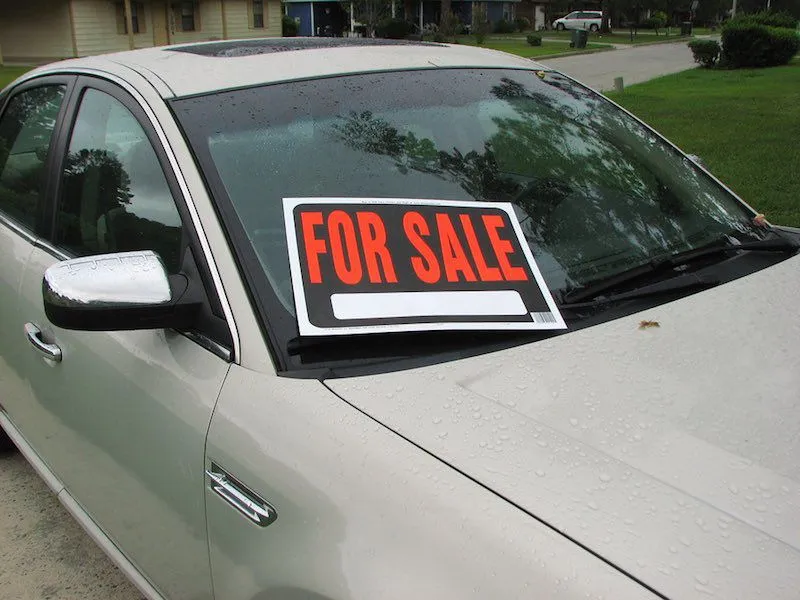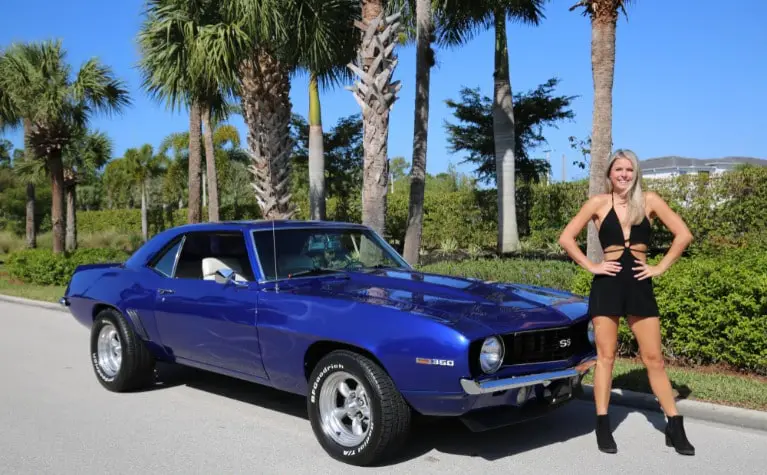What steps do you take to get it ready to sell? When someone comes to look at it, what do you do? Cyrus Auto Parts has a Sell and Buy Car Live Swift Guide for you. It will help you with the process of getting your old car out the door. Our company doing business of Auto Salvage Yard. We buy used cars for the most cash and pick them up (Towing) for free.
Selling your own car might be a difficult undertaking. How do you prepare it for sale? What are you going to do when someone arrives to look at it? Should you let them test drive it on their own? Should you allow them to take it to a mechanic to be inspected? There are so many unanswered questions. Never fear, though, Cyrus Auto (our yelp link) is here to make selling your used automobile easier and to assist you through the steps necessary to get your old car out the door fast and efficiently.
Pricing
First, learn about the market for your specific car and conduct some research to determine a reasonable price. Use sources like KBB, Edmunds, and Cars.com to help you price it right. At CyrusAutoParts.us, you can Contact our customer service team to provide consultations that will help you sell your vehicle quickly and also, we buy any condition cars at a very good price. When you visit the locations, be truthful about the state of your vehicle. Is there a few dings and scratches on it? Is it in need of some tender loving care? Is it a high-mileage vehicle or a low-mileage vehicle? What is the age of it? All of these factors might have a good or negative impact on the pricing of your car. It's critical to price your automobile right if you want it to sell, so be honest about any problems you know about.
Clean Your Vehicle
Then, get your car ready to sell. This means you should take it to a car wash to clean all of the dirt and grit off the outside and inside. Vacuum your carpets, get rid of all those old receipts and stray French fries, wipe down the interior and steering wheel with a conditioner and cleaner (some recommend Meguiars or Griot's because it's what the pros use at car shows and won't harm your car's interior), and get the inside spick-and-span. Clean all the nooks and crannies outside and give it a nice wax. A hand wax takes a lot more time, but it is far better for the car (here's a handy DIY method), and it will make your car stand out as one that has been well-maintained.
Also, at least rinse off the undercarriage of your car, especially if you live and drive where they salt and sand the roads. In addition to cleaning it, be sure to have all the necessary maintenance done on it. Have the fluids changed, rotate the tires, get new windshield wipers if you need them. Save the receipts to show to any potential buyers that may be curious about the last maintenance the car had. If you need new tires, a sometimes-pricey investment, you can either choose to replace them or disclose in your listing that they are not new and will need to be replaced.
Isn't It Time to Make photos Instagrammable quality rate?
It's now time to start taking pictures. Go to a place where you can get away from it so that you can frame it. Take shots of the front, sides, three-quarters, inside, and any other relevant characteristics. It's also a good idea to take photos of any additional features on your vehicle (such as customized tires or rims, an updated GPS system, or any sport enhancements).
A car's value is mostly based on its photos, and photos are the greatest method to put your automobile up for sale. The images should have the highest possible resolution, be well-lit, and have a razor-sharp focus. If your images seem like they were taken with a potato, no one will come up to buy your used car.
 Photo Rate into Instagrammable quality
Photo Rate into Instagrammable quality
Prepare Your Documents
Next, gather your documents. This includes your title and a bill of sale from the DMV in your state. It's a good idea to make a copy of your vehicle's title so that when it sells, you can take that copy to the DMV and notify them of the transaction. It will also come in handy when you need to contact your insurance company to get the automobile removed from your policy after it sells.
- In case you don't have your title with you
Your title may be in the hands of a bank. When you sell your car, you'll need to get the bank to sign over the ownership rights. You'll also need to tell people that the car has a balance on it when you put it up for sale, so they know that the deal will be a little more complicated. If you want the signature of your lienholder, the best way is to sell your car at the bank that has the lien on it. Hire an escrow service, too, if your bank is not in your area or it is an online bank. During the sale, the escrow service will hold the title and handle all of the money.
Create A Detailed Listing
When your car is clean and ready to go, it's time to start working on your own ideas. Those are the best listings. They have great descriptions and a good story. Make sure to talk about the things that make your car different. What did you like best about it? Other people might love it. It's important to include things like the car's warranty, maintenance, and any known problems or issues that might make the sale more difficult. Also include the condition of the car and why you're selling it. Use correct spelling and punctuation and ask someone else to make changes to your ad.
Take a look at your car's resume. You don't want commas or bad spelling to make your hard work go away. It's time to put your ad on the platform of your choice. Make sure to share it with your friends and family, too. You never know when a friend might be looking for a car that looks just like yours.
Spend time to Show & Test Drives
Then it's time for the performances. This aspect of the used automobile selling procedure can be tedious because it frequently necessitates a significant amount of time and effort. If someone displays an interest in your vehicle, be sure to answer as soon as possible. Before you go to meet the potential buyer, schedule a time and place that is both public and neutral, and make sure your automobile is free of personal stuff. Also, be sure that anyone else driving your car is covered under your insurance policy. Get a copy of the buyer's license or write down their information if the buyer intends to drive the automobile alone (which isn't encouraged). Before you let them out, set a time restriction and a distance for them to test drive the car. It is suggested that you join any potential customers for the test drive so that they can ask questions about the vehicle while driving.
If a potential buyer requests that you take the automobile to a mechanic, the decision is entirely yours. If you are a buyer, we recommend that you have any secondhand vehicle inspected. If you have the receipt from the most recent mechanic visit, now is the moment to get it out and display it to them. It might put them at ease. You can also have a mobile mechanic come and inspect the vehicle. As Edmunds.com points out, if you feel at all uncomfortable with the person, plan to accompany them and your car to the mechanic.
Time to Negotiate
Now it's time to get down to business with the negotiations. If the buyer determines that the car is truly appealing to them, they will make you an offer. Negotiate with them until you reach a price that you both agree on. Once a price has been agreed upon, talk about how they will pay. Although it is generally better to finish the deal in cash, you can alternatively take a check.
A Payment Method Has To Be Decided
If that's the case, personal checks aren't a good idea to accept because they can bounce. A cashier's check from a local bank would be a better alternative. As a precaution, verify with your bank to see if there are sufficient cash to complete the deal. Make certain that the payment has been received before handing over the keys or the title. Once the title and the bill of sale have been signed and the buyer has done the same, hand over the title and the keys. Get a copy of the sales contract as well.
After The Sale: Notify The DMV
Finally, all that's left to do is notify the DMV that you've sold the automobile and remove it from your insurance policy. Take care of it right away, because you don't want the buyer driving around on your insurance or pretending to be you while driving around town.
If you don’t want to involve with the complications leave the entire procedure of your used car selling to us, Cyrus Auto buy your wrecked or any condition car top dollar.
Simple points For Buying A Car in a Smart Way
These days' new cars come equipped with more advanced safety measures and high-tech gadgets than those produced a decade ago. Let's face it: trading in a rusted, filthy car for a newer one sounds like a good deal.
Car shopping can be a risky business for many Americans. Take a trade-in when you buy a new car sometimes is not right. Many people who purchase a vehicle do so with an additional $5,000 in debt from their previous vehicle. Sometimes they're paying for a car that they no longer use. Ouch! In terms of personal finance, it's a bad idea to follow that path.
Fortunately, we're here to ease your concerns. Get a car without going into debt or spending more than you should.
 Simple points For Buying A Car
Simple points For Buying A Car
1. Begin the car-buying process with pre-approval
"The single best piece of advise I can give folks is to be preapproved for a car loan via their bank, credit union, or internet lender," Philip Reed says. He's the automotive editor at NerdWallet, a personal financial website. When he worked for the car-buying website Edmunds.com, he also went undercover at an auto dealership to learn the ropes. So, Reed is going to pull back the curtain on the car-buying game.
For one thing, obtaining a loan from a lender other than the vehicle dealership, he claims, forces customers to consider a critical question. "What kind of car can I afford? Before a salesperson gets you falling in love with the limited model with the sunroof and leather seats, you'll want to do that."
Preapproval, according to Reed, also indicates any credit issues. So, before you go automobile shopping, work on improving your credit score or removing inaccurate information from your credit report.
A word of warning concerning lenders: according to John Van Alst, a lawyer with the National Consumer Law Center, there are many dishonest lending firms operating online. Going with a mainstream bank, credit union, or other lender whose name you recognize is a good choice, according to Reed.
2. Keep it simple at the dealership.
Focus on one thing at a time when buying a car at a dealership. Also, don't provide too much information to the salespeople. Keep in mind that this is a game. And you don't hold up your cards and announce, "Hey, everybody, see — I have a pair of queens," do you?
So, according to Reed and Van Alst, the first step at the dealership is to determine the price of the vehicle you are purchasing. The salesperson at the dealership will frequently inquire if you intend to trade in another vehicle and if you intend to take out a loan through the dealership. Don't answer those queries, according to Reed! That makes the game excessively difficult to play, especially when you're up against professionals. If you get a great deal on a car, they may raise the loan rate to make more money off you or undervalue your trade-in. They have the ability to juggle all of those elements in their heads at the same time. You do not wish to do so. Maintain a straightforward approach. Keep it simple. One thing at a time.
After you've decided on a price, you can discuss a trade-in if you have one. However, Reed and Van Alst advise that you do your homework there as well. A little web research can tell you roughly how much your trade is worth. Edmunds.com, Kelley Blue Book, and NADA all offer free pricing recommendations, according to Reed. You may also view what others in your region are asking for your car model on Autotrader. "You may obtain a legitimate offer through Carvana.com as well as by taking the car to a CarMax, where they would write you a check right away," he explains.
If you believe the dealership is lowballing you on your old car, he and Van Alst say don't be scared to walk away or buy the car at a decent price without the trade-in. These days, you have a lot of other good possibilities.
3. Better to not buy any add-ons at the dealership.
If you've ever bought a car, you're familiar with how this works. You've been at the dealership for hours, you're exhausted, you've agreed on a price, you've haggled over the trade-in, and then you're turned over to the finance manager.
"This is where you'll find the back office. They'll refer to it as the box a lot "Van Alst agrees. "In terms of the extended factory warranty," says Reed, "you can always buy it later." "So, if you're looking to buy a new automobile, you may do so in three years, right before the warranty expires." If you want the extended warranty at that point, he recommends calling several dealerships and asking for the best price each has to offer. Because you're still covered by the new car's warranty, you won't have to roll the cost into your auto loan and pay interest on a service you won't use for three years, he claims.
4. Be cautious of six- or seven-year car loans.
One-third of new car loans now have terms of more than six years. According to Reed, this is a "very hazardous tendency." We have a full explanation on why this is the case. In general, a seven-year loan has cheaper monthly payments than a five-year loan. However, it will also mean paying significantly more in interest.
According to Reed, seven-year loans frequently carry higher interest rates than five-year loans. And, like most loans, the interest is front-loaded, which means you pay more interest than principal in the first few years. "Most people aren't even aware of it, and they have no idea why it's hazardous," Reed says.
Reed claims that if you want to sell your car — either because you can't afford it, or because you have another child and need a minivan instead — you're much more likely to be trapped owing more than the car is worth if you have a seven-year loan. "It puts you in a very vulnerable financial situation," he explains.
A five-year loan for a new car is preferable, according to Reed, and "with a used car, you should really finance it for only three years, which is 36 months." One reason for this, he explains, is that if your secondhand car breaks down and isn't worth repairing — say, the transmission completely fails — you'll have paid off the loan by then.
5. Don't buy a lot of cars. Then, look into used cars to save money.
"The golden rule is that your car expenses should be no more than 20% of your take-home salary," Reed adds. And he claims the figure includes all automotive expenses, such as insurance, gas, and repairs. "As a result, the car payment should be between 10% and 15%."
And if a new automobile with a five-year loan is out of your price range, you may decide you don't need a brand-new car at all.
"We're living in a golden age of used cars," Reed says. "I mean, the dependability of used cars these days is astonishing." Reed claims that there is an unlimited stream of cars in excellent condition that are coming off three-year leases. Even cars that are older than that, he believes, are worth consideration. "You know, people are buying good used cars with 100,000 miles on them and driving them for another 100,000 miles," Reed adds. "As a result, I'm a huge fan of buying a secondhand car to save money."
 look into used cars to save money
look into used cars to save money
A Reputable Used or Junk Car Buyer
Finding the right junk car buyer takes some time and research. You want to get a fair price for your car and understand all details of the deal. And most importantly, you want to work with a reputable buyer who will handle the process in a clear and efficient manner. We hope this Sell and Buy Car Live Swift Guide helped you out. When you’re ready to get the offer you deserve for your used car, contact Cyrus Auto and we can work with you!
Call: (937)250-6982
Address: 5518 W Third St, Dayton, OH 45417